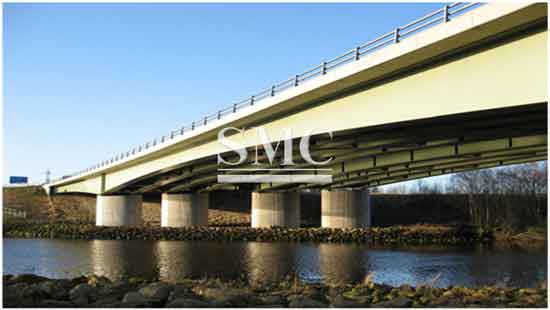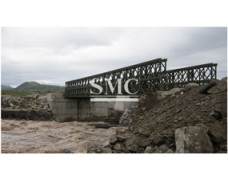
- Unternehmensübersicht Das Herz von Shanghai Metal Vision und Philosophie Partnerschaft Zertifizierungen Unternehmenskultur
- Unser Service Projekt-Design Wartung und Service Herstellung Transformation und Aufrüstung Lagerung und Logistik Verarbeitung und Handel
- Management Unsere Geschichte Globale Verantwortung
- Beschaffungszentrum Praktikum
- Metall Aluminiumprodukte Kupferprodukte Metallisch beschichtete Produkte Edelstahlprodukte Stahlprodukte Sonderlegierung
- Konstruktion Stahlgitter Lagerregal Stahlstruktur Stahlbrücke Gerüstbau Baumaterial Chemische Rohstoffe One Stop Solutions for Projects
- Containers ISO Standard Container Gerätecontainer Lagerbehälter Container Haus Reefer / Isolierbehälter Offshore Container
- Maschinen Formmaschine Andere Maschinen Schneidemaschine Verarbeitungsmaschine Biegemaschine Ziegelmaschine Motor
- Mechanische Produkte Fahrzeugindustrie Verschiedenes Festmacher Schiffsausrüstung Druckbehälter
- Elektrisches System Elektrisches Kabel Automatisierung Machtverteilung Solarenergie System Elektrisches Schutzsystem Transformator Fließband Blitzsystem
- Medizinisches Zubehör Fütterungsprodukte Atemwegsprodukte Pflegeprodukte Injektionsprodukte
- Baumaschinen
- EPC-Projekt
- Erdölleitung
- Wasserleitung
- Gas Leitung
- Boots- und Liegezubehör
- Metall zur Dekoration
- Transformator-Komponenten
- Wärmetauscherrohr
- Klimaanlage Ersatzteile und Zubehör
- Kessel
- Küchen- und Badezimmergerät
- Metall für Haushaltsgeräte
- Solarstromgerät
- Aufzug
- Dach und Decke
- Kabel
- Tank
- Verpackung
- Maschinen und Anlagen Ersatzteile und Zubehör
- Formenwerkzeug
- Autoteile
- Gleis- und Kranbahn
- Hardware-Anpassung
- Schleifmittel
- Straßenbaumaschinen
- Elektronische Bauteile
- Bau- und Ausbaumaterialien
- Türen und Fenster
- Kühlschränke
- Pressemitteilung Nachrichten aus der Metallindustrie Nachrichten von Maschinen und Anlagen Nachrichten von Bau und Gebäude Nachrichten von mechanischen Produkten Nachrichten von Containern Nachrichten von Elektrik System Nachrichten von medizinischem Zubehör
- Medienbibliothek Videos Bilder Folgen Sie den sozialen Medien in Shanghai
Stahlträgerbrücke
1. Höchste nationale Qualifikation - Erstklassige Stahlbauingenieure
2. fähig, alle Arten Stahlbauprojekte ohne Beschränkung in der Spannweite, Vertragssumme, Baugebiet oder Gesamtgewicht des Aufbaus zu unternehmen
3. Erhalt der Konstruktionsdesign-Qualifikation
4. Erfahren in Übersee-Projekt
5. Co-Entwicklung mit Universitätslabor
6. 85000㎡ Werkstatt, ungefähr 3000 Arbeitskräfte, zum der Lieferfrist sicherzustellen
1. Highest national qualification--Grade One Steel Structure Engineering Professional Contractors
2. Able to undertake all kinds of steel structure projects without limitation in span, contract sum, construction area or total weight of construction
3. Obtained the Construction Design Qualification
4. Experienced in overseas project
5. Co-development with University Lab
6. 85000㎡ workshop, about 3000 workers to ensure delivery time
Allgemeines
Eine Balken- und Decken- oder Verbundbrücke ist eine, bei der eine Stahlbetondeckplatte auf Stahl-I-Trägern sitzt und mit diesen beim Biegen zusammenwirkt. Es gibt zwei Hauptformen dieser Balken- und Plattenkonstruktion; Mehrträgerkonstruktion und Leiterdeckkonstruktion. Zusammen bilden sie die Mehrheit der mittelspannigen Autobahnbrücken, die derzeit in China gebaut werden, und eignen sich für Spannweiten von 13 m bis zu 100 m. Die Wahl zwischen den beiden Formen hängt von wirtschaftlichen Überlegungen und standortspezifischen Faktoren wie der Form der Zwischenstützen und dem Zugang zum Bau ab.
Solche Verbundbrücken übernehmen zunehmend eine "integrale Konstruktion", bei der das Deck starr mit den Widerlagern verbunden ist. Dadurch werden keine Kompensatoren und Lager benötigt, wodurch zukünftige Wartungsanforderungen minimiert werden.
In einigen Situationen, insbesondere bei Eisenbahnbrücken, ist die Tiefe zwischen der Verkehrsfläche (oder den Schienen) und der Unterseite der Brücke stark eingeschränkt, und es ist wenig Tiefe für die Struktur verfügbar. Unter diesen Umständen wird eine Halbdurchlaufkonstruktion verwendet.
Produktinformation
SMC verwendet immer hochwertigen Strukturstahl, der weltweit in zertifizierten Güten, in Produkten verschiedener Formen und Größen, erhältlich ist. Die Vorfertigung von Stahlkonstruktionen unter kontrollierten Fabrikbedingungen führt zu qualitativ hochwertigen Arbeiten zu minimalen Kosten. Die ausgezeichnete Qualitätskontrolle wird durch ein gründliches Testverfahren in den Stahlwerken und während der Herstellungsprozesse von Schneiden und Bohren, Montage, Schweißen und Schutzbehandlung erreicht. Die erreichte Qualitätssicherung sollte allen Kunden und Ingenieuren, die Stahl für ihr Brückenprojekt spezifizieren, Vertrauen schenken.
Stahlmaterial wird in zwei Produktformen geliefert - "flache Produkte" (Stahlblech und -band) und "Langprodukte" (Walzprofile, entweder offene Standardprofile wie Träger, Kanäle, Winkel usw. oder Hohlprofile). Für den strukturellen Einsatz in Brücken werden diese Produkte zwangsläufig geschnitten (auf Größe und Form) und verschweißt, eine Komponente zur anderen. In der Struktur unterliegt das Material Zug- und Druckkräften. Baustahl reagiert im Allgemeinen linear elastisch bis zur "Fließgrenze" und hat danach eine erhebliche Kapazität für die plastische Beanspruchung vor dem Versagen. All diese Aspekte des Stahlmaterials werden vom Designer einer Stahlbrücke genutzt.
Konstruktion
Für Stahlbrücken stehen eine Vielzahl von Konstruktionsmethoden und -abfolgen zur Verfügung. Sie können Stück für Stück mit Kränen oder Litzenhebern angehoben werden; sie können durch Gleiten oder Rollen vom Abutment aus gestartet werden; oder sie können in Position geschoben oder transportiert werden. In einigen Fällen ist eine Kombination von Erektionsmethoden erforderlich; Diese werden als "Hybrid-Systeme" bezeichnet. Stahl bietet Flexibilität in Bezug auf den Montageablauf und die Sicherheit in Bezug auf das Programm. Nach dem Aufstellen bieten die Stahlträger Plattformen für den anschließenden Deckbau. Das kann die Bauzeit reduzieren.
Die Vorfertigung von Stahlbauteilen außerhalb der Baustelle bedeutet, dass die Bauzeit vor Ort häufig in aggressiven Umgebungen erfolgt. Die Geschwindigkeit der Brückenkonstruktion, die durch Stahl ermöglicht wird, ermöglicht es, Störungen für Straßen- und Schienenbenutzer auf ein Minimum zu reduzieren. Das relativ geringe Gewicht von Baustahlbauteilen erlaubt die Errichtung großer Abschnitte; unter Umständen können komplette Brücken über Nacht in Position gebracht werden. Die Geschwindigkeit des Stahlbrückenbaus kommt auch den Hauptauftragnehmern zugute, selbst auf "grünen" Baustellen, da sie den Zugang für Transportstraßen herstellen und aufrechterhalten können.
General
A beam and slab, or composite bridge is one where a reinforced concrete deck slab sits on top of steel I-beams, and acts compositely with them in bending. There are two principal forms of this beam and slab construction; multi-girder construction and ladder deck construction. Between them, they account for the majority of medium span highway bridges currently being built in the China, and are suitable for spans ranging from 13m up to 100m. The choice between the two forms depends on economic considerations and site-specific factors such as form of intermediate supports and access for construction.
Increasingly, such composite bridges are adopting ‘integral construction’, where the deck is rigidly connected to the abutments. This eliminates the need for expansion joints and bearings, which minimises future maintenance requirements.
In some situations, notably for railway bridges, the depth between the trafficked surface (or rails) and the underside of the bridge is severely constrained and there is little depth available for the structure. In these circumstances, ‘half-through’ construction is used.
Product Information
SMC always use high-quality structure steel that is readily available worldwide in certified grades, in products of various shapes and sizes. Prefabrication of steelwork in controlled factory conditions leads to high quality work at minimum cost. The excellent quality control is achieved through a thorough testing regime at the steel mills and during the fabrication processes of cutting and drilling, assembly, welding, and protective treatment. The quality assurance that is attained should give confidence to all clients and engineers who specify steel for their bridge project.
Steel material is supplied in two product forms – ‘flat products’ (steel plate and strip) and ‘long products’ (rolled sections, either standard open sections such as beams, channels, angles, etc or hollow sections). For structural use in bridges these products are inevitably cut (to size and shape) and welded, one component to another. In the structure, the material is subject to tensile and compressive forces. Structural steel generally responds in a linear elastic manner, up to the ‘yield point’ and thereafter has a significant capacity for plastic straining before failure. All these aspects of steel material are utilised by the designer of a steel bridge.
Construction
A wide range of construction methods and sequences are available for steel bridges. They can be lifted, piece-by-piece, by cranes or strand jacks; they can be launched by sliding or rolling from the abutment; or they can be slid or transported into position. In some instances a combination of erection methods are needed; these are called ‘Hybrid schemes’. Steel offers flexibility in terms of erection sequence and certainty in terms of the programme, once erected, the steel girders provide platforms for subsequent deck construction operations. That can reduce the construction time.
Offsite prefabrication of steel components means that construction time on site often in hostile environments. The speed of bridge construction made possible by steel allows disruption to road and rail users to be kept to a minimum. The relatively low weight of structural steel components permits the erection of large sections; in some circumstances complete bridges can be moved into position overnight. Speed of steel bridge construction also benefits main contractors even on ‘green field’ sites, as it allows them to establish and maintain access for haul roads.
HIER
FÜR
PREIS
We will contact with you within 8 hours










